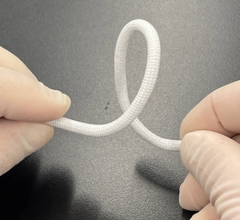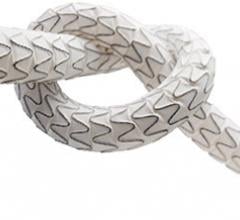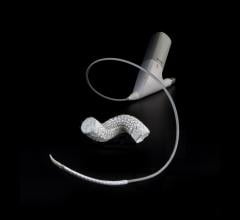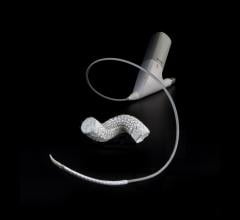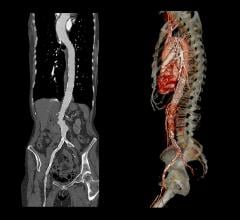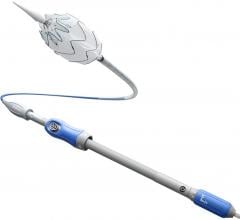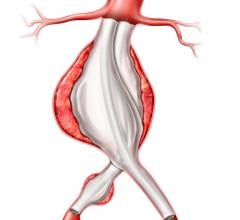
November 8, 2010 – A new aortic extension has been implanted in a clinical setting for the first time. The Ventana fenestrated stent graft, by Endologix, was implanted at Auckland City Hospital in Auckland, New Zealand.
The procedure was performed by Andrew Holden, M.D., associate professor and director of interventional radiology at the hospital, and Andrew Hill, M.D., associate professor of surgery. The patient's juxtarenal aneurysm was successfully excluded while maintaining full perfusion of the renal arteries and visceral vessels.
The device is designed to be used with the anatomically fixed Powerlink bifurcated stent graft. It was developed to provide a treatment option for juxtarenal and certain pararenal aortic aneurysms (JAA/PAA), which extend near to or involve the renal arteries. There are currently no FDA-approved, commercially available endovascular options for these patients.
"We are very excited to have successfully completed the first human Ventana fenestrated stent graft procedure in the world. Given our extensive experience with aortic aneurysmal disease and understanding the limitations of all commercially available endovascular devices, we believe that Ventana has the potential to address a significant unmet clinical need – a minimally invasive alternative for patients presenting with JAA or PAA,” Holden said. “We look forward to participating in the Ventana clinical program and, following the completion of regulatory processes, having this important new technology available to treat our patients who otherwise have few options."
"Unfortunately, many patients with JAA and PAA do not have much time to wait and need to be treated immediately to avoid aneurysm rupture,” said Daniel G. Clair, M.D., chairman, Cleveland Clinic Department of Vascular Surgery. Clair attended the procedure as a medical advisor. “The Ventana off-the-shelf design is unique in that it represents a potential minimally invasive solution for these difficult to treat aneurysms. The device also leverages the good clinical results of the Powerlink design and anatomical fixation. I am pleased with the progress that Endologix has made developing this device and look forward to initiating a U.S. multicenter clinical trial in 2011."
The company will continue enrolling patients in international clinical studies in 2011. It also expects to submit an Investigational Device Exemption (IDE) to the U.S. Food and Drug Administration (FDA) in 2011.
For more information: www.endologix.com

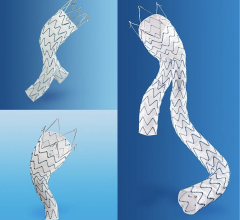
 April 26, 2023
April 26, 2023 

